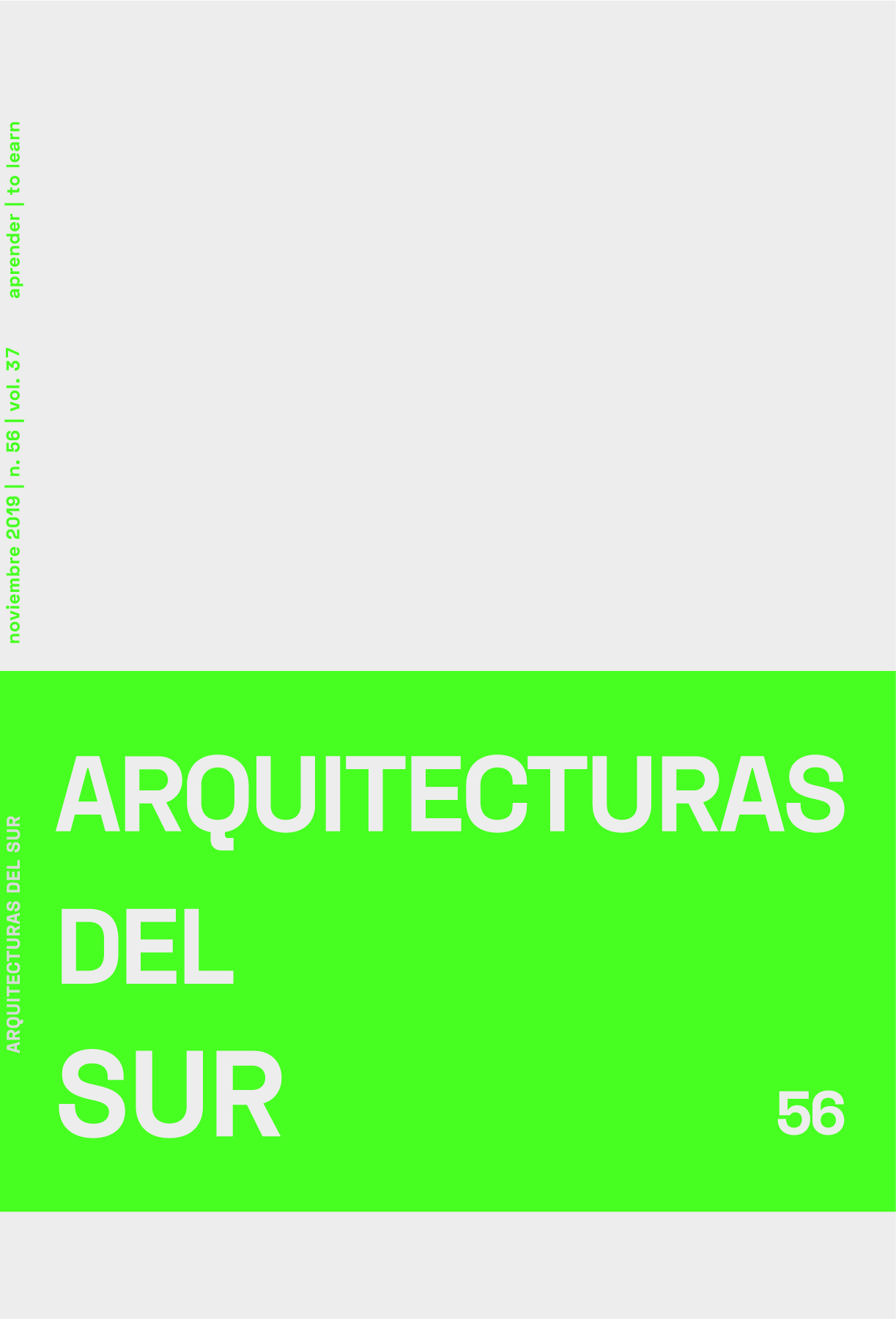Representation in the Teaching of Heritage: A conceptual and methodological approach employed at the Goiabeiras Campus of the Federal University of Espírito Santo, Brazil
DOI:
https://doi.org/10.22320/07196466.2019.37.056.06Keywords:
Heritage, teaching, territory, methodology, territorial planningAbstract
This article presents the results of a conceptual and methodological proposal employed in the “Historical, Artistic and Cultural Heritage” course in the Architecture and Urbanism degree at the Federal University of Espírito Santo (UFES), Brazil. It was motivated by the idea of overcoming the conservation- development dichotomy and the widening of the concept of heritage to include the notion of territorial heritage, which not only identifies heritage at broader geographical scales, but also its procedural logic. One of the problems presented is the segmentation of the heritage-teaching-design thematic triad. To overcome it, and through an empirical- qualitative methodology based on the Italian Territorialist School approach, a proactive participatory experience was created in which students are encouraged to work on representation as a method of recognizing heritage-value architecture and interpreting critical pre-existence at the UFES ́s Goiabeiras Campus. The experience is divided into three stages: a) analysis, through a preliminary inventory, which identifies, classifies and categorizes the campus’ valuable assets; b) synthesis, where the previous maps are compared and layers of territorial heritage (physical, built and anthropic) are identified and serve as a basis for the definition of landscape units, according to which the values and potential resources of the territorial heritage are interpreted diachronically; and c) design experience, based on critical interpretation. This experience results in an awareness of the transformative power of territorial heritage representation, not only as a document, but as an active instrument for interpretation, identification and analysis, which improves integrated design actions.
Downloads
References
Bates, K. (2018). Bringing the inside out and the outside in: Place- based learning rendering classroom walls invisible. In The Palgrave international handbook of women and outdoor learning (pp. 731-751). Palgrave Macmillan, Cham.
Carta, M. (2012). La rappresentazione nel progetto di territorio. Un libro illustrato. Firenze: Firenze University Press.
Chawla, L. (2004). Identity and the natural environment: The psychological significance of nature-Susan Clayton and Susan Opotow (Eds.); MIT Press, Cambridge, MA; 2003, 353 pages, ISBN 0-262-03311-9; Journal of Environmental Psychology, 3(24), 406-408.
Choay, F. (2000). A alegoria do património (T. Castro, Trad). Lisboa: Edições 70.
Fanfani, D., Berni, F., & Tirinnanzi, A. (2014). Tra territorio e città: ricerche e progetti per luogi in transizione. Firenze: Firenze University Press.
Gendlin, E. T. (2004). The new phenomenology of carrying forward. Continental Philosophy Review, 37(1), 127-151.
Instituto do Patrimônio Histórico e Artístico Nacional (Brasil) (2004). Cartas Patrimoniais. 3O. Ed. Rio de Janeiro: IPHAN.
Magnaghi, A. (2000). Il progetto locale. Torino: Bollati Boringhieri.
Magnaghi, A. (2005). La rappresentazione identitaria del territorio. Alinea: Firenze.
Magnaghi, A. (2014). La regola e il progetto. Un approccio bioregionalista alla pianificazione territoriale. Firenze: Firenze University Press.
Magnaghi, A (2016). Le invariante strutturali, fra patrimônio e statuto del territorio. In A. Marson, La struttura del paesaggio.
Magnaghi, A (2017). A Biorregião urbana: Pequeno tratado sobre o território, bem comum. Matosinhos: Escola Superior de Artes e Design una sperimentazione multidisciplinare per il Piano della Toscana (p. 147-156). Bari: GLF editori Laterza.
Mannion, G., & Lynch, J. (2016). The primacy of place in education in outdoor settings. In Routledge international handbook of outdoor studies, 85-94.
Paolineli, G.; Valentini, A. (2009). Valorizzazione e riqualificazione dei paesaggi fluviale. In A. Magnaghi; S. Giacomozzi. Un fiume per il territorio. Indirizzi progettuali del Valdarno empolese (pp. 201-215). Firenze: Firenze University Press.
Poli, D. (2005). Il patrimonio territoriale fra capitale e risorsa nei processi di patrimonializzazione proattiva. In B. Meloni, Aree interne e progetti d’area (pp. 123-140). Turim: Rosenberg e Sellier.
Poli, D. (2012). Regole e progetti per il paesaggio. Florença: Firenze University Press.
Santos, M. (2008). Metamorfoses do espaço habitado. São Paulo: Edusp.
Silva, E. (1983) Uma introdução ao projeto arquitetônico. Porto Alegre: Editora da Universidade, UFRGS; Brasília, MEC/SESu/PROED.
Solà-Morales, I. de. (2006). Intervenciones. Barcelona: Editoria Gustavo Gili.
Published
How to Cite
Issue
Section
License
The content of the articles published in each issue of Arquitecturas del Sur is the sole responsibility of the authors and does not necessarily represent the opinion of University of the Bío-Bío.
The authors will maintain their copyright; however, they will guarantee the journal the right to first publication and dissemination of their work. The publication of the article in Arquitecturas del Sur will be subject to the Creative Commons International license (CC BY-SA) that allows others to adapt: remix, transform and build on the material for any purpose, even commercially; share: copy and redistribute the material in any medium or format, as long as the authorship and first publication in this journal are acknowledged by citing them correctly, and their new contributions are under a license with the same terms.














 Programa de Información Científica/Concurso Fondos de Publicación de Revistas Científicas 2018/ Proyecto Mejoramiento de Visibilidad de Revistas UBB (Código:FP180007)
Programa de Información Científica/Concurso Fondos de Publicación de Revistas Científicas 2018/ Proyecto Mejoramiento de Visibilidad de Revistas UBB (Código:FP180007) 
